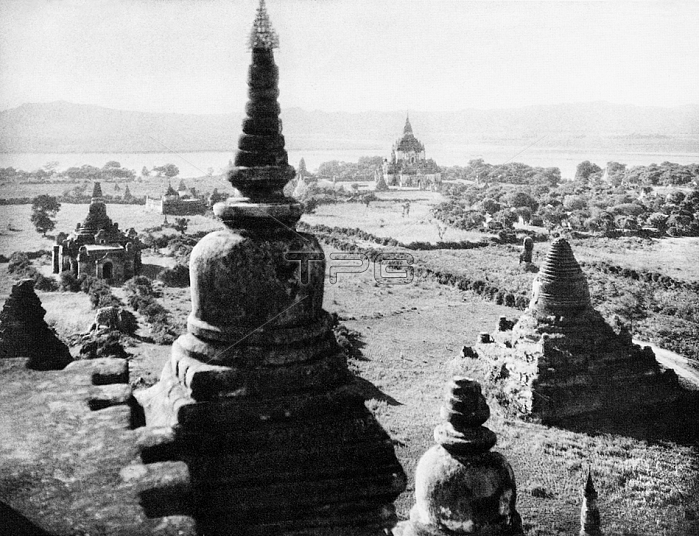
The ruins of Bagan (also spelled Pagan) cover an area of 16 square miles (41 km2). The majority of its buildings were built between the 11th and 13th centuries; during the time Bagan was the capital of the First Burmese Empire. It was not until King Pyinbya moved the capital to Bagan in 874 CE that it became a major city. However; in Burmese tradition; the capital shifted with each reign; and thus Bagan was once again abandoned until the reign of King Anawrahta who; in 1057; conquered the Mon capital of Thaton; and brought back the Tripitaka (Tipitaka) Pali scriptures; Buddhist monks and craftsmen to help transform Bagan into a religious and cultural centre. With the help of a monk from Lower Burma; Anawrahta made Theravada Buddhism the state religion.
In the 12th and 13th centuries; Bagan became a truly cosmopolitan centre of Buddhist studies; attracting monks and students from as far as India; Sri Lanka as well as the Siamese and Khmer kingdoms. Among many other works; Aggava?sa's influential 鈥楽addaniti;' a grammar of the language of the Tripi?aka; would be completed there in 1154. In 1287; the kingdom fell to the Mongols; after refusing to pay tribute to Kublai Khan. Abandoned by the Burmese king and perhaps sacked by the Mongols; the city declined as a political centre; but continued to flourish as a place of Buddhist scholarship.
| px | px | dpi | = | cm | x | cm | = | MB |
Details
Creative#:
TOP20153867
Source:
達志影像
Authorization Type:
RM
Release Information:
須由TPG 完整授權
Model Release:
No
Property Release:
No
Right to Privacy:
No
Same folder images:

 Loading
Loading